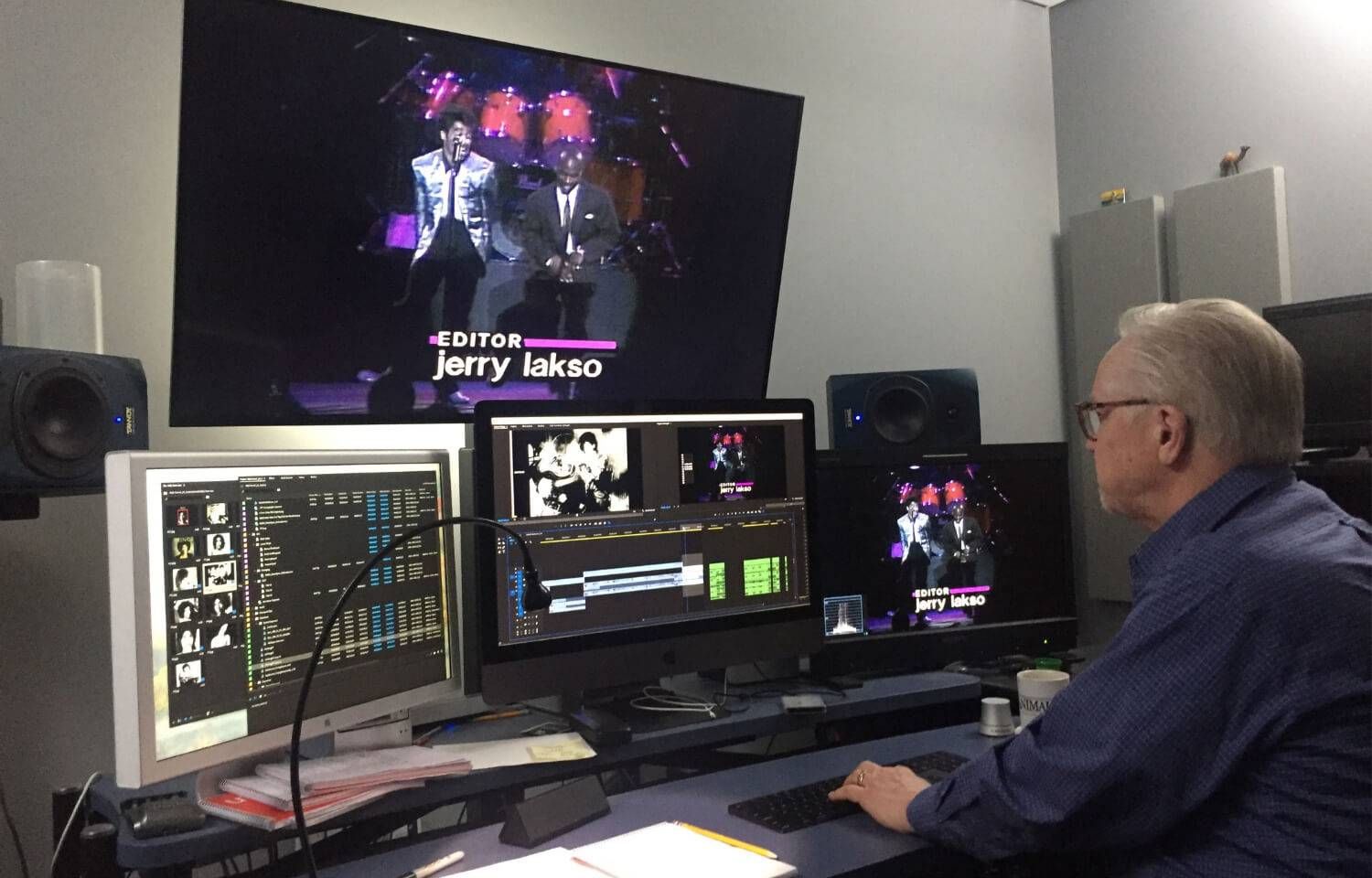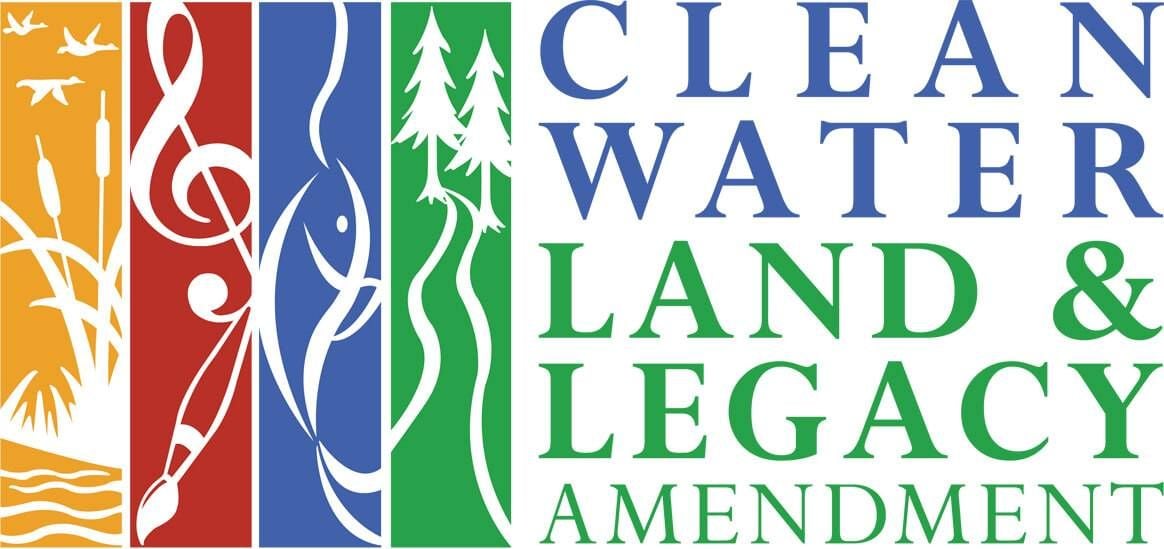TPT Editor Jerry Lakso Revisits 'The Minneapolis Sound' 30 Years Later

In 1988, Twin Cities PBS editor Jerry Lakso had worked on several segments for different KTCA shows, but an intriguing project spearheaded by first-time documentary producer Emily Goldberg gave him the opportunity to tackle his first full-length film. On a quest to understand the complex root system of "the Minneapolis Sound," Goldberg is both producer and character as she interviews local notables such as Morris Day of The Time, Jimmy Jam Harris of The Time and Flyte Tyme Studio and the three very subdued members of Hüsker Dü - and as she tries, ultimately without luck, to score an interview with Prince, already a legend of musical muscle.
With a string of nostalgia-driving songs woven throughout the documentary, as well as a collection of snippets from 1980s MTV music videos, Lakso developed his talent for editing audio, and for marrying the right image with the right sound.
Thirty-one years later, Lakso was tapped to give The Minneapolis Sound a retro reboot so it could air as part of TPT's weekly history show, Minnesota Experience. With a change in music licensing rights, Lakso had the opportunity to also rethink the documentary's soundtrack since Prince's music could no longer pepper the film.
Between creative challenges surrounding music rights, and the dramatic shifts in filmmaking and editing technology, Lakso takes us through a then-and-now journey after putting the final polish on the updated version of The Minneapolis Sound, which premieres on Monday, April 8 at 9 pm on TPT2.
So let's start at the beginning. What were some of the unique challenges you faced when you edited the 1988 version of The Minneapolis Sound?
Jerry Lakso (JL): Editing was totally different at that time because it was all analog and all linear. You talk about non-linear editing now - when we changed from linear to non-linear, I used to describe it to people as the difference between a typewriter and a word processor.
And video editing was even more challenging than film editing because film was non-linear. You could cut the film and take a clip and move it up here and change the order of things easily. While your linear editing starts the beginning and you go through to the end. If you want to change something, you have to go back to the point before that happened and re-do everything afterwards. There was no offline editing per se. If the documentary was shot on Beta SP tape - the cassette tapes - then we had a small room where we could sort of offline and get our stories for each little segment. Obviously, The Minneapolis Sound was six or eight segments, stories about different bands or personalities. So we were able to figure out the story and save that to an edit-decision list. Then we could take that on a floppy disk and put it in the big edit room, we called it CMX, and the computer could read that and we could recreate those edits on our one-inch master tape, which was one-inch analog, reel-to-reel, master tape.
Just to give readers a solid flashback, you were still editing tape in 1988?
JL: We're still editing tape. There were no computers at that time and memory was such that it was pretty much impossible to digitize. I mean, now there's more technology, more computing power and memory in my phone than there was in the entire edit room back then. It was computer-assisted editing. We had a computer that controlled analog tape machines and, in the CMX room, we had a video switcher and an audio board that were manual. We had an audio engineer, a young man named Matthew Zimmerman, who ran Wild Sound Studios for decades sometime after. We had a lot of music videos from the record labels on tape, and we could roll those in and that would be mixed basically live to tape with a voiceover or whatever audio was playing. And I think we did have a multi-track recorder available to us, but it wasn't like you did the whole thing on multi-track. It was pretty much live to tape.
It was, I guess, challenging because it was linear. You really didn't know the length of the show until you were done, but you made your best guess.

How long would a project like this one have taken in 1988?
JL: It would have been a slower process. We had to, as I said, offline edit each individual segment and getting all the segments ready was probably a process of several weeks. And then the online edit itself was probably at least another week.
Now editing is pretty much done by an editor in a room and sometimes a producer will be in the room.
Were you a music fan at the time?
JL: No, actually I wasn't. I wasn't a big music fan. The show's producer, Emily Goldberg, definitely was, and her interest in music really drove the show. But even then, I felt that I had a talent for editing audio, so I can remember some places where we would use music video. And I would realize that I liked a certain music track, but if the visual wasn't quite right, I would make an edit in the music video to get better visuals. I think we were all a bit surprised how well it worked.
There are a few winks of humor in the film. For example, The Times Morris Day says in an interview that he's not the best dancer. But then we cut to music video footage in which he proclaims, "I'm the best dancer in the world!" As an editor, how much of an influence do you have over the storytelling?
JL: We worked really closely together on the original story. There was a lot of collaboration and there was also an associate producer, Barbara Wiener, that worked with Emily to set up shoots and get material. It was a really collaborative process from the very beginning, even though it was really Emily's story. This is back when narration was this "voice of God narrator." Most of the voiceovers were done by men back then. It wasn't unheard of to have a female voice, but it seemed like it was going to be really challenging to find the right voice and someone who was coachable to present Emily's story. I remember encouraging to do her own voiceover. I think I helped her make that decision.
It sounds like you and Emily were the "young guns" of KTCA in 1988. What else was happening at the station in those days? Was The Minneapolis Sound in line with the station's direction at that time, or were you bucking the system?
JL: Let me refresh my memory. In my time at Channel 2, it was not known as TPT back then, it was KTCA Channel 2. When I started, I actually worked part-time as an engineer under the original General Manager of the station, John Schwartzwalder. I have actually worked under every General Manager from the beginning until now.
Under Schwartzwalder, KTCA was seen as an educational station. So The Minneapolis Sound took place probably within the first decade of the station's switch from being educational to what would have then been called public television. Public television became a term instead of educational television. Before then, it was known as the National Educational Network back then. Our second General Manager, Bill Kobin, was a big instigator of that change. We would start doing not just school or academic subjects, but cultural things as well. The Minneapolis Sound was part of that. We wanted to be focused on the community, and I think we did a lot more community-oriented documentaries back then. T
How did the changes in music licensing impact the 2019 refresh of The Minneapolis Sound?
Around the time that MTV was starting up, record companies were happy to give television stations music videos for us to use however we wanted. We did have the rights cleared for those. Flash forward, those rights expired, and we're not able to use them as freely as we could at that time. It was hard for me, as that was my baby, to accept that we had to take out most of the music videos and a lot of the music as well. But it was clear that we had to make some drastic cuts, and I was really happy to see that the story held up even without the music in it. Even with out Prince's music, there are still a lot people talking about him. So that was a positive, a-ha moment - that actually held together as a story. Then, of course, Minnesota Experience did the interviews with the original producer, Emily Goldberg, and Bianca Rhodes was the daughter of Jellybean Johnson who was in The Time, which has become a great part of the story.
The video of the Time was actually from our own music series. We did a live half-hour show on Monday nights for three years, and The Time played live in our studios. That was about the time when I was still a production engineer, and I did the video tape for those productions. I was there for The Time in the studio, and I kept going back to, "What other songs did they do?" I think they might have only been on one show and did at least two songs, so just tiny snippets are remaining in the documentary.
When you compare the two versions of the film, what's you favorite thing about each?
JL: I enjoyed editing in the music videos and making that part of the original story, which made it much more current to what was really going on in the music scene at the time.
And what do I like about it now? The surprise that the story really held together so well. Even having to cut down the music, there are some things that stayed the same. Jimmy Jam, for example, kept the hair and the sunglasses and the hat. Jimmy Jam, Terry Lewis and Prince were ahead of the curve in understanding what their "brand" was long before people really thought much about that.
Take a peek at some of our favorite clips from the old-but-new documentary, The Minneapolis Sound, featuring a heavy rotation of sound bites from Jimmy Jam Harris.
Explore what the heyday of the Minneapolis Sound was like for women in this story penned by Camille Gage, a member of Minnesota's first all-female rock band Têtes Noires.

This story is made possible by the Arts and Cultural Heritage Fund and the citizens of Minnesota.
